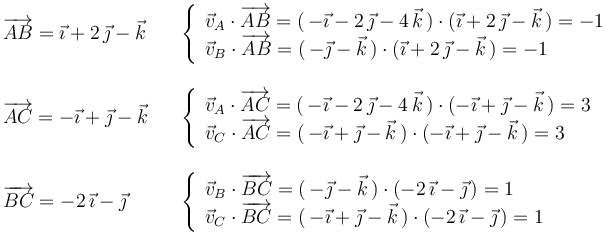No Boletín - Cuestión sobre tres velocidades (Ex.Feb/14)
De Laplace
Revisión a fecha de 11:47 21 mar 2014; Enrique (Discusión | contribuciones)
1 Enunciado
Las posiciones y velocidades instantáneas de tres puntos de un sólido rígido vienen dadas por:
| Punto |  (m) (m)
|  (m/s) (m/s)
|
|---|---|---|
| A | 
| 
|
| B | 
| 
|
| C | 
| 
|
¿Cuál de las siguientes afirmaciones es verdadera?
(a) Estos datos son incompatibles con la rigidez
(b) La velocidad de deslizamiento (segundo invariante) vale 
(c) La velocidad angular (primer invariante) vale 
(d) El eje instantáneo de rotación pasa por el punto de coordenadas 
2 Equiproyectividad. Descartando (a)
La condición cinemática de rigidez consiste en la equiproyectividad del campo de velocidades:

Sometiendo a examen a cada par de puntos:

comprobamos que los datos del enunciado son compatibles con la rigidez, y por tanto la afirmación (a) es FALSA.





